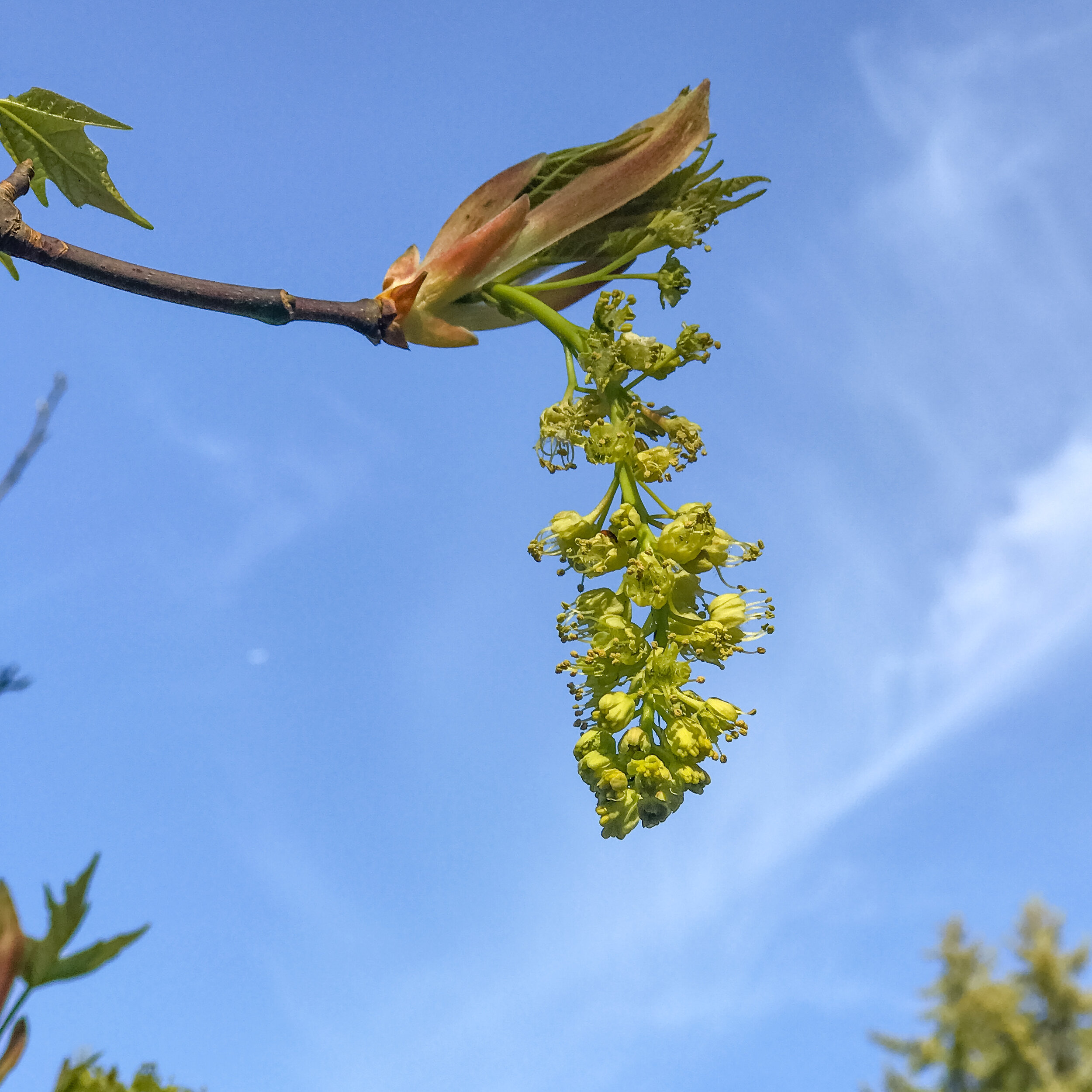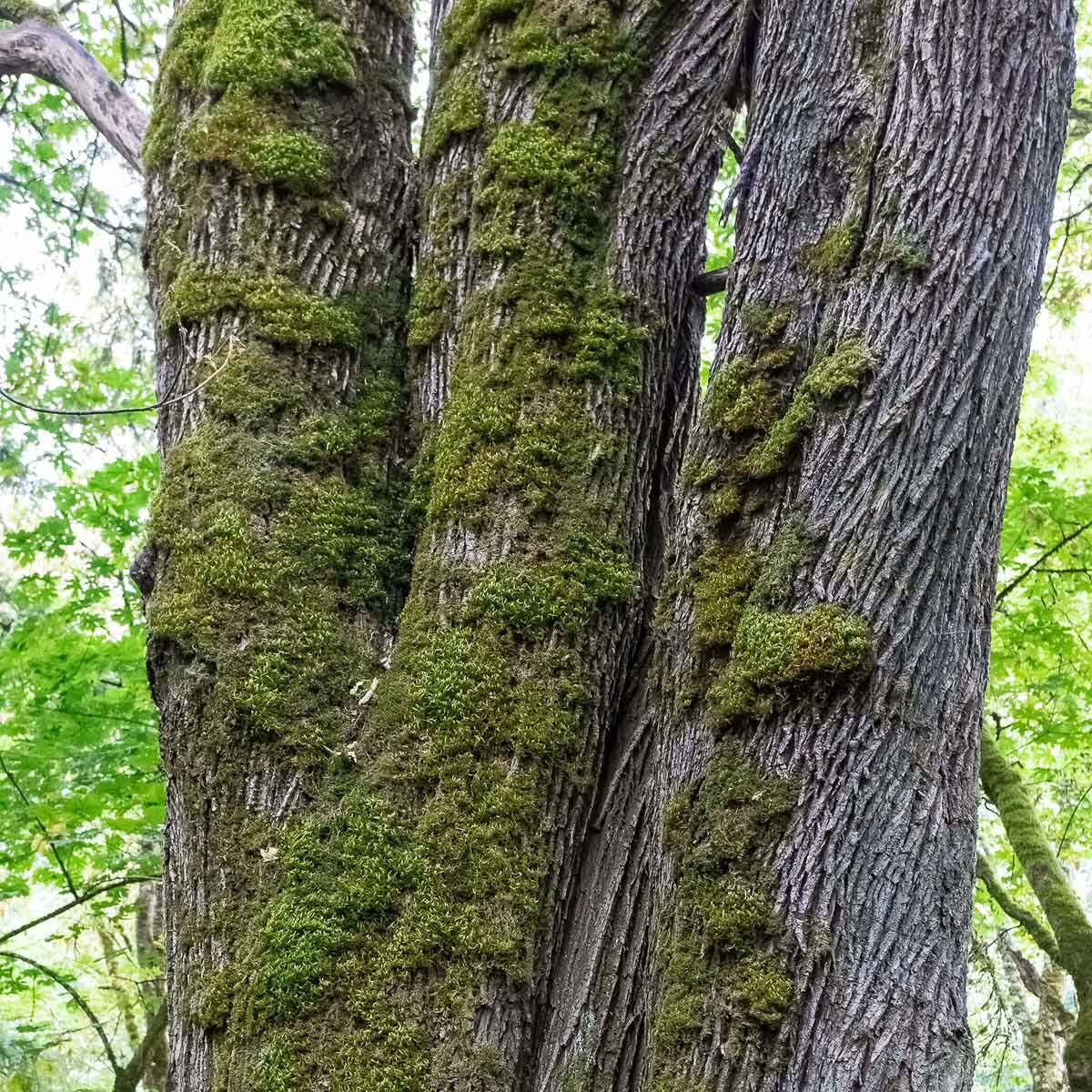Maple trees are “flowering plants.” (Douglas-firs are not.) As flowering plants, maple trees bear flowers that produce fruits that contain seeds.
Bigleaf maple flowers are bursting open right now. Have you noticed?
Out my window, I can see several mature bigleaf maples, Acer macrophyllum. Each of these trees has a mossy trunk and a huge hemispherical crown. They have not yet leafed out. Right now, they are chock full of yellowish-green, cylindrical flower clusters.
There are 50+ flowers in each cluster; and clusters cover each tree. It is no exaggeration to say that bigleaf maple flowers in your neck of the woods number in the billions!
These flowers, when fully open, provide a veritable banquet for native bees and flies. And while these insects feast, they pollinate the tree. The resulting “fruits” are the familiar double-winged seeds that come helicoptering down in the fall. Bigleaf maples are prolific seed producers.
Bigleaf maples are probably the second-most abundant deciduous tree in the Pacific NW, after red alder, Alnus rubra. They are moderately long-lived, easily reaching 100 years and, in many cases, 200 or 300 years of age. They grow on the west side of the Pacfic NW at low to mid-elevation.
When an opening develops in a conifer forest—whether naturally or man-made—bigleaf maples can fill it rapidly. Bigleaf maples may be more abundant in forests of today than they were 100 years ago.


